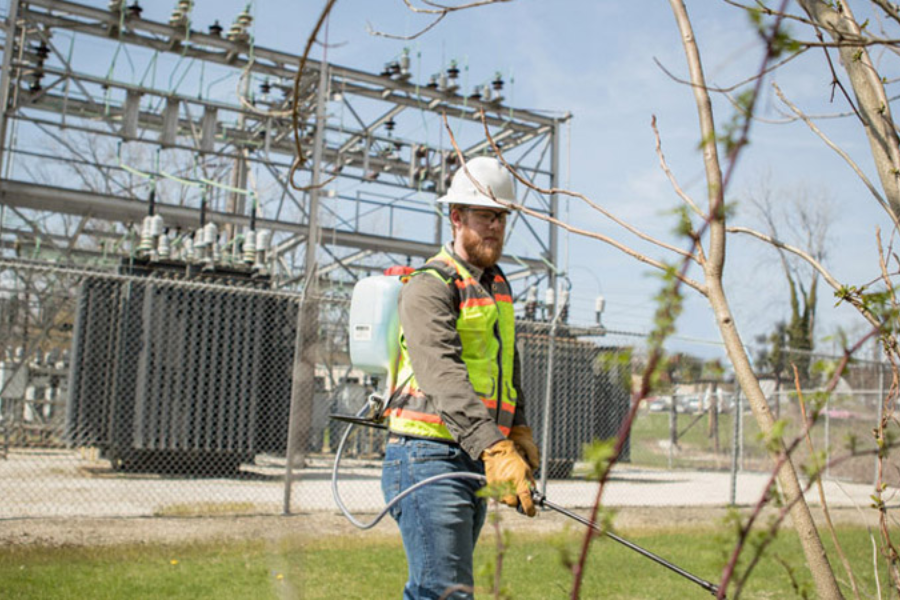Integrating Vegetation Management and Technology in Utility Services
Table of Contents
- Importance of Vegetation Management
- Technological Advancements in Vegetation Management
- Case Studies and Examples
- Cost-Effectiveness and Reliability
- Future Prospects and Trends
Importance of Vegetation Management
Vegetation management is a cornerstone for ensuring utility services’ safety, reliability, and efficiency. Overgrown vegetation can interfere with power lines, causing outages, property damage, and even devastating wildfires. By carefully managing the growth and distribution of flora around utility infrastructure, service providers can prevent significant disruptions and costly repairs arising from unmitigated vegetation growth.
In fact, the magnitude of this issue is underscored by a report from Utility Dive, which indicates that effective vegetation management prevents over 50% of potential outages in hazardous conditions. This statistic highlights the essential role of well-executed vegetation management strategies in safeguarding utility operations and ensuring continuous service delivery.
Technological Advancements in Vegetation Management
The integration of advanced technologies such as drones, AI, and GIS mapping is transforming vegetation management. These cutting-edge tools enhance the precision and efficiency of vegetation control efforts, significantly reducing the need for manual labor and associated risks. Thus, effective utility vegetation management strategies are vital in minimizing these risks and maintaining a stable supply of utilities. For example, aerial drones equipped with high-resolution cameras and LiDAR technology can quickly survey expansive areas, providing detailed imagery and data that accurately identify potential hazards in shorter time frames than traditional ground-based inspections.
Furthermore, AI algorithms can process the vast amounts of data drones collect to predict potential issues and optimize maintenance schedules. By leveraging predictive analytics, utility managers can proactively address vegetation-related risks before they escalate. GIS mapping systems also play a crucial role by offering detailed geographic representations that aid in the planning and executing of vegetation management tasks. These maps provide a visual overview of areas that require immediate attention, further streamlining the maintenance process.
Case Studies and Examples
Numerous utility companies have successfully integrated technology into their vegetation management programs, achieving remarkable results. One notable case involves a leading utility provider implementing a comprehensive drone surveillance program. By using drones to conduct regular inspections, the company significantly reduced outages and maintenance costs. The real-time data collected allowed for timely interventions, ensuring that potential issues were addressed before they could disrupt services.
Another example of successful integration is using AI-driven analytics to predict vegetation growth patterns. This approach enables the creation of proactive maintenance schedules, preventing issues before they arise and enhancing reliability. Harvard University has published an article highlighting the role of AI in reducing power outages. This research emphasizes the significance of predictive analytics in improving utility service reliability and safety while showcasing the potential for innovation in vegetation management strategies.
Cost-Effectiveness and Reliability
The integration of technology into vegetation management is improving reliability and proving to be a cost-effective solution for utility companies. Automated systems reduce the need for manual labor, which in turn lowers operational costs. Additionally, the increased accuracy of issue detection made possible by advanced technology prevents costly outages and damage repairs, further contributing to cost savings.
Various utility companies have reported substantial returns on their investments in technology-driven vegetation management systems. These investments streamline processes, allowing for more efficient resource allocation and reducing the likelihood of unexpected disruptions. As a result, utility companies can ensure a more reliable and uninterrupted supply of services to their customers while optimizing their operational budgets.
Future Prospects and Trends
The future of vegetation management is set to become even more technologically advanced. Innovations in machine learning, satellite imagery, and real-time data analytics are expected to offer greater control and predictive capabilities. These advancements will give utility companies unprecedented insights into vegetation conditions and growth patterns, enabling more precise and timely interventions.
As these technologies become more accessible, even smaller utility providers can leverage them, leading to industry-wide improvements in utility management and safety. The ongoing development and adoption of advanced vegetation management solutions will play a crucial role in ensuring the resilience and reliability of utility services in an increasingly complex and dynamic environment.
“Explore the latest insights and trends at NYHeading.com.”






